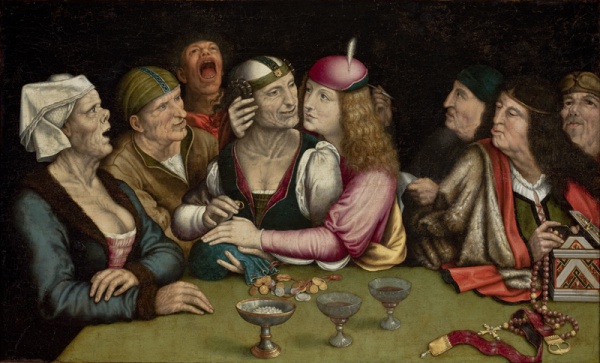Facts About Ill-Matched Marriage(The Marriage Contract)
"Ill-Matched Marriage" is a captivating oil painting by Quentin Matsys, an early Netherlandish artist, believed to have been created between 1525 and 1530. This intriguing work, currently housed in the São Paulo Museum of Art, depicts a marriage driven by financial motives between individuals of different ages. Interestingly, Matsys may have drawn inspiration from a lost sketch by Leonardo da Vinci. The painting became part of the museum's collection in 1965, thanks to a donation from Baron Hans Heinrich Thyssen-Bornemisza.
Within the broader context of art history, numerous renowned artists, including Goya, Leonardo da Vinci, Dürer, and Lucas Cranach the Elder, have explored the theme of age-disparate marriages. Matsys' take is particularly notable because it subverts the usual narrative: instead of an older man marrying a younger woman, he portrays a wealthy older woman marrying a younger man. Matsys also created a version with the more conventional dynamic, which is now housed in the National Gallery of Art in Washington, D.C.
The painting humorously captures the absurdity of the situation. It shows an elderly woman offering a wedding ring to a young man, who responds by caressing her. The exaggerated features of the characters, particularly a figure on the right putting a necklace back into a box, enhance the scene's mockery and absurdity.
This theme of "grotesque marriage" extends beyond visual art and is a common subject in satirical literature. Works like Sebastian Brant's "Ship of Fools" (1494) and Erasmus of Rotterdam's "The Praise of Folly" (1509) also address the concept of marrying for money, highlighting the folly and moral implications of such unions.

 Venezuela
Venezuela